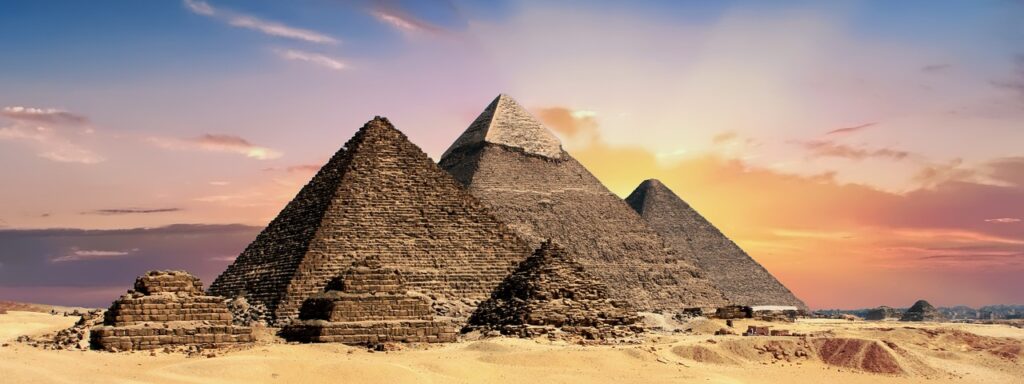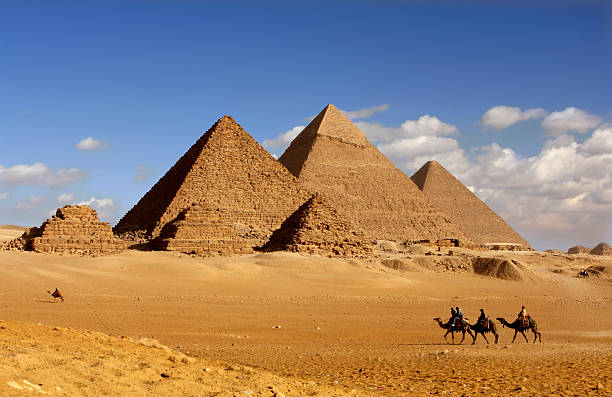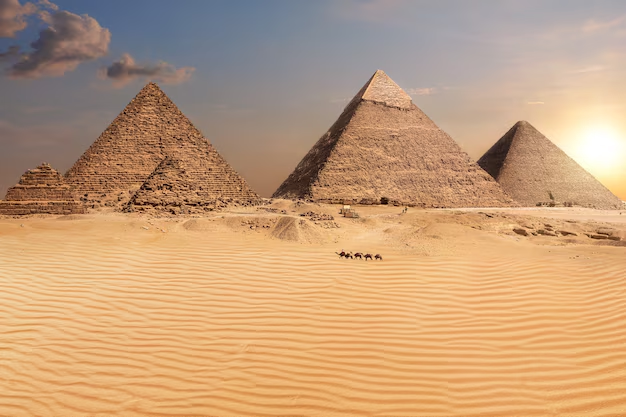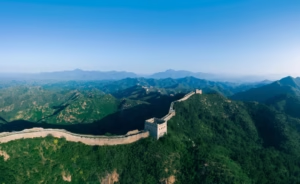The Egyptian Pyramids:Wonders of Architecture and History

The Egyptian pyramids are some of the most famous and incredible buildings in the world. They are known for their huge size, perfect shape, and mysterious purpose. Built thousands of years ago, these pyramids still amaze scientists, historians, and tourists alike. In this article, we will explore everything about the Egyptian pyramids—how they were built, why they were built, what secrets they hold, and why they are still important today.
1. What Are the Egyptian Pyramids?
The Egyptian pyramids are large, stone structures that look like a triangle from the sides and a square from the top. Most of them were built as tombs for pharaohs, the kings of ancient Egypt. The ancient Egyptians believed in life after death. They thought that when a person died, their soul continued to live in another world. So, they built these grand tombs to help the pharaohs travel to the afterlife.
There are over 130 pyramids in Egypt, but the most famous ones are found near Cairo, in a place called Giza.
2. The Most Famous Pyramids in Egypt
a. The Great Pyramid of Giza
The Great Pyramid is the biggest and most well-known pyramid in Egypt. It was built for Pharaoh Khufu (also known as Cheops) around 2560 BCE. It was originally 146.6 meters (about 481 feet) tall, but now it is slightly shorter due to erosion and the loss of the smooth outer stones.
- It is made of about 2.3 million stone blocks.
- Some blocks weigh more than 15 tons.
- It is the last remaining of the Seven Wonders of the Ancient World.
b. Pyramid of Khafre
This pyramid belongs to Khafre, the son of Khufu. It is slightly smaller than the Great Pyramid but stands on higher ground, so it looks taller. Near this pyramid is the famous statue of the Great Sphinx, which has the body of a lion and the head of a man, possibly Khafre himself.
c. Pyramid of Menkaure
The third pyramid at Giza was built for Menkaure, Khafre’s son. It is much smaller than the other two but still a great example of ancient Egyptian engineering.
3. Why Were the Pyramids Built?
The pyramids were built as royal tombs for the pharaohs and powerful people in ancient Egypt. The Egyptians believed that death was not the end of life. They believed in an afterlife where the soul needed food, clothing, treasures, and other goods.
That’s why the pyramids were filled with:
- Food and drink
- Furniture
- Gold and jewelry
- Statues and tools
- Sacred writings and spells
These items were meant to help the pharaoh in the next world. The pyramid itself was designed to protect the body and all the treasures from robbers, animals, and weather.

4. How Were the Pyramids Built?
One of the biggest mysteries of the pyramids is how they were built without modern tools or machines. The Egyptians did not have cranes, bulldozers, or trucks. Yet they managed to build huge pyramids that have lasted for thousands of years.
Tools and Materials
- The workers used copper chisels, hammers, wooden sleds, and stone tools.
- They used stones like limestone, granite, and basalt.
- Some stones were brought from quarries far away and moved by boat along the Nile River.
Workers
For a long time, people believed that slaves built the pyramids. But recent discoveries show that the pyramids were built by skilled workers and farmers, who were well-fed and lived in nearby workers’ villages.
These workers were organized into teams, with leaders and builders, much like construction workers today.
Construction Methods
Experts believe the workers used ramps to pull the heavy stones up the sides of the pyramid. There are several ideas about how the ramps worked:
- Straight ramps in front of the pyramid
- Spiral ramps around the pyramid
- Internal ramps built inside the pyramid walls
They also used water to wet the sand and reduce friction, which made it easier to drag the stones.
https://sypertimes.com/the-nile-river-lifeline-of-civilization/
5. Architecture and Design
The pyramids were not just big—they were beautifully designed and carefully planned.
Shape and Size
- The base is a square, and the four sides meet at a point at the top.
- The shape may have represented the sun’s rays or a stairway to the heavens.
- Some pyramids were originally covered in smooth white limestone, which made them shine brightly in the sun.
Inside the Pyramid
Most pyramids have:
- A main chamber (for the pharaoh’s body)
- Narrow passageways
- Storage rooms for treasures and offerings
- Sometimes a Queen’s Chamber and air shafts
Alignment
The Great Pyramid is aligned almost perfectly with true north. This shows that the Egyptians had a strong understanding of astronomy and mathematics.
6. The Pyramid Texts and Beliefs
Inside some pyramids, especially from later periods, are writings called the Pyramid Texts. These are some of the oldest religious writings in the world.
These texts include:
- Prayers to the gods
- Magic spells to protect the soul
- Instructions for reaching the afterlife
They show how deeply the Egyptians believed in life after death, and how important the pyramids were in their religion.
7. Mysteries of the Pyramids
Even today, the pyramids are full of mysteries.
a. How Were They Built So Accurately?
The Great Pyramid is nearly perfect in its shape, size, and direction. It is still unknown how the Egyptians achieved such precision with simple tools.
b. Hidden Chambers
Modern technology like 3D scanning, radar, and cosmic ray detectors has discovered possible secret chambers inside the pyramids. In 2017, scientists found a large unknown space inside the Great Pyramid, but its purpose is still not understood.
c. The Missing Capstone
Most pyramids once had a capstone at the top, possibly made of gold. These capstones are now missing, and no one knows exactly what they looked like or where they went.

8. Who Built the Pyramids?
The builders of the pyramids were not slaves, as once believed. They were:
- Skilled workers
- Craftsmen and engineers
- Farmers who worked during the Nile River’s flood season
They lived in well-organized communities, with food, shelter, and even doctors. This shows how much the Egyptians valued their workers.
9. The Fall and Damage of the Pyramids
Over time, the pyramids have suffered damage from:
- Earthquakes
- Wind and sand erosion
- Theft of stones by people building homes and mosques
- Tourists and pollution in modern times
Today, efforts are being made by the Egyptian government and international groups to protect and preserve the pyramids.
10. Why Are the Pyramids Important Today?
The pyramids are not just ancient ruins—they are:
- A symbol of human creativity and strength
- A treasure of world heritage
- A source of scientific and historical knowledge
- A popular tourist attraction visited by millions
They remind us of what people can do with teamwork, faith, and vision, even without modern tools.
Conclusion
The pyramids of Egypt are more than just old stone buildings. They are masterpieces of architecture, windows into the past, and mysteries that still puzzle the world. They tell the story of a great civilization that believed in the power of the afterlife, honored their leaders, and achieved greatness with limited tools but unlimited determination.
Even after more than 4,000 years, the pyramids continue to inspire wonder and curiosity. They teach us about our past and push us to learn more about history, science, and what it means to be human.




